The green tint of the brew and the natural green colour of the leaf is what gives Green tea its name. Green tea produces each year varies based on the region they are grown and also based on seasonality (usually around early to mid-spring and the order of the flush). Moreover, the differences become more striking based on the way the harvesting is done and the method used for processing the tea. (Reference: Green Tea: Health Benefits Uses and Side Effects, RX List, Retrieved 1 January 2024) Harvests vary based on the grinding process, the rolling method and the length and type of dying process.
Table of Content
2. What are The Benefits of Green Tea
2.1 May improve brain function
2.3 Contains healthy bioactive compounds.
3. What are the different types of Green Tea?
3.1 Sencha Green Tea
3.4 Tencha Green Tea
3.5 Matcha Green Tea
3.7 Konacha or Agari Green Tea
3.9. Fukamushi cha (Fukamushi Sencha or Fukamushi Ryokucha) Green Tea
3.10 Kukicha (Karigane) Green Tea
3.11 Kamairicha Green Tea
3.12 Genmaicha Green Tea
3.13 Bancha Green Tea
1. What is Green Tea
Green tea is a type of tea that is made from Camellia sinensis leaves and buds that have not undergone the same withering and oxidation process used to make oolong teas and black teas. Green tea originated in China, and since then its production and manufacture has spread to other countries in East.
2. What are The Benefits of Green Tea
Green tea is touted to be one of the healthiest beverages on the planet.
It’s loaded with antioxidants that have many health benefits, which may include:
- improved brain function
- fat loss
- protecting against cancer
- lowering the risk of heart disease
There may be even more potential health benefits.
2.1 May improve brain function
Green tea does more than just keep you alert, it may also help boost brain function. The key active ingredient is caffeine, which is a known stimulant.
It doesn’t contain as much as coffee, but enough to produce a response without causing the jittery effects associated with taking in too much caffeine. Caffeine affects the brain by blocking an inhibitory neurotransmitter called adenosine. This way, it increases the firing of neurons and the concentration of neurotransmitters like dopamine and norepinephrine.
2.2 Fat burning.
If you look at the ingredients list for any fat burning additives, chances are, green tea will be on there. This is because, according to research, green tea can increase fat burning and boost metabolic rate. In one study involving 10 healthy men, taking green tea extract increased the number of calories burned by 4%. In another involving 12 healthy men, green tea extract increased fat oxidation by 17%, compared with those taking a placebo.
2.3 Contains healthy bioactive compounds.
Green tea is more than just a hydrating beverage. The green tea plant contains a range of healthy compounds that make it into the final drink. Tea is rich in polyphenols, which are natural compounds that have health benefits, such as reducing inflammation Green tea contains a catechin called epigallocatechin-3-gallate (EGCG). Catechins are natural antioxidants that help prevent cell damage and provide other benefits.
3. What are the different types of Green Tea?
Green tea leaves are picked and are immediately followed by the steaming and roasting process to prevent the oxidation process from occurring and stopping any fermentation to happen. (Reference: Health Benefits of Tea, WebMD, Retrieved 1 January 2024) Different types of this step lead to different types of Tea, especially Green Tea. For example, the Japanese and Chinese green tea leaves differ in the steaming process as Chinese farmers pan-fry the leaves to flatten and dry out the leaves immediately after picking. (Reference: Flavonoids: The secret to health benefits of drinking black and green tea?, Harvard Health Publication, Retrieved 1 January 2024) On the other hand, the Japanese farmers steam fry the leaves. Pan-frying also makes the leaves stiffer. (Reference: 10 Different Types of Green Tea, Big Flag Tea, Retrieved 1 January 2024)
3.1 Sencha Green Tea
- Appearance & Color of the leaves - Leaves acquires a needle-like shape because of the rolling process. Leaves are dark bright green in colour.
- Tea Liquor Color - Transparent yellow to light yellow-green
- Aroma - Fresh and soothing - Sencha green tea leaves have a refreshing flavour that can be described as vegetal, green, seaweedy, or grassy.
- Taste & Flavor - Good balance between astringent and sweet - Sencha green tea acquires an intensified flavour compared to other green tea varieties because of the rolling process. The rolling process leads to the release of all the juices inside of the leaves.
- Aftertaste - Deep, long-lasting green
- Water temperature - 70°C (158°F)
- Growing Method - Sencha is grown in direct sunlight.
- Timing of Harvest - Sencha is usually harvested as part of the first flush.
- Processing Method - Once picked, the tea leaves are steamed. The steaming process is done with the youngest leaves at the top. After the steaming process, the leaves are dried and rolled. The processing method plays a critical role in the price of green tea in the form of green tea bags or loose green tea leaves
- Health Benefits - Sencha tea is one of the highest sources of Vitamin C. In humans, Vitamin C helps in fighting the common cold and in boosting the immune system.
- Uniqueness - Sencha is the most frequently drunk variety of green tea leaves around the globe. (Reference: Varieties of Green Tea, ITO EN Ltd, Retrieved on 1 January 2024)

Sencha Green Tea, licensed under CC BY 2.0
3.2 Hojicha Green Tea
- Appearance & Color of the leaves - The leaves look much darker than Sencha because of the roasting process.
- Tea Liquor Color - Bright, transparent brown
- Aroma - Deep roasted aroma - Hojicha is less bitter in taste than Sencha.
- Taste & Flavor - Light and uncomplicated - Hojicha has a savoury aroma to its leaves because of the roasting process.
- Aftertaste - Subtle green tea
- Water temperature - 95°C (203°F)
- Processing Method - Hojicha is prepared from Sencha by the roasting process. At 200 degree celsius, the Sencha green tea leaves are roasted in a roasting pan. Caffeine is sublimated during this process and Hojcha is formed.
- Health Benefits - Helps in increasing the bodies immune system and assists in fighting the common cold.
- Uniqueness - Among the different types of tea, its leaves have a distinct roasted aroma. (Reference: 10 different types of green tea you need to know about, Big Flag Tea, Retrieved on 1 January 2024)
Hojicha Green Tea, licensed under CC BY 2.0
3.3 Gyokuro Green Tea
- Appearance & Color of the leaves - The leaves are of darker shade compared to Sencha but have lower astringency and has a rich flavour. Leaves are less spread out and not in needle shape, unlike Sencha.
- Tea Liquor Color - Pale, transparent yellow
- Aroma - “Sea breeze” aroma - The aroma is similar to nori seaweed.
- Taste & Flavor - Sweet with a deep umami flavour - Gyokuro is known for its sweet flavour. The sweet flavour is because of the presence of high levels of theanine. Theanine is an amino acid that forms because of the shading process of the leaves.
- Aftertaste - Seaweed, spinach
- Water temperature - 40°C (104°F)
- Growing Method - Gyokuro tea bushes are shaded with cloth or reed screen around three weeks prior to picking. Because of restricted sunlight, the generation of catechins from amino acids (theanine) is suppressed.
- Timing of Harvest - Its harvested as part of first or second flush, however in its case shading the tea leaves from the sunlight becomes an utmost requirement.
- Processing Method - Post harvesting the tea leaves are taken through the same steaming and rolling process as Sencha.
- Health Benefits - Gyokuro contains large amounts of caffeine and chlorophyll as compared to the types of tea. Both these components stimulate the brain and nervous system. It also assists well as a skin ointment and helps in tissue growth.
- Uniqueness - Since the tea is more difficult to shade and cultivate, the production cost and price of green tea leaves are high. (Reference: Best Green Tea Types for Beginners, The Spruce Eats, Retrieved on 1 January 2024)
Gyokuro Green Tea, licensed under CC BY 2.0
3.4 Tencha Green Tea
- Appearance & Color of the leaves - During the process of preparing Tencha, vines and stems are removed and only the leaves are left behind. Leaves are bright green in colour and lack the blacks because Tencha tea does not undergo any rolling process.
- Tea Liquor Color - Pale green
- Aroma - Subtle noble Aroma
- Taste & Flavor - The taste is deep and mellow because of the high mineral content. Aftertaste - Mellow sweet
- Water temperature - 40°C (104°F)
- Processing Method - Similar to Gyokuro, the raw leaves (Ichibancha) are grown according to the covered culture method to block out most sunlight. The coverage period is longer than the standard 20 days that Gyokuro is covered for. After steaming, the leaves are dried without being rolled. This step has huge impact determine the price of green tea leaves from the different types of tea.
- Health Benefits - As Tencha doesn’t undergo the rolling process so larger leaves release high levels of minerals and vitamins and so it acts as a booster in terms of energy and metabolism. The high level of caffeine allows for the alertness of mind. this is one of the reasons that the price of green tea of this variety is on the higher side.
- Uniqueness - This tea is best before and after exercise to rejuvenate the body. (Reference: Japanese Green Tea: Satisfy Your Senses With 10 Shades Of Green, Sazen Tea, Retrieved on 1 January 2024)
Tencha Green Tea, licensed under CC BY 2.0
3.5 Matcha Green Tea
- Appearance & Color of Matcha - Matcha is the powdered form of Tencha. The powder is bright green in colour.
- Tea Liquor Color - Matcha green tea is vivid green in colour
- Aroma - Matcha green tea has a refreshing aroma of fresh green leaves - Being another form of Tencha it smells exactly the same - having a subtle noble aroma. This green tea leaves is one of the most famous among the different types of tea.
- Taste & Flavor - Rich and complex with a deep umami flavour - Matcha tea is also used to prepare traditional Japanese confections and savoury dishes, because of its sweeter taste.
- Aftertaste - Matcha green tea has a sweet aftertaste.
- Water temperature - 80°C (176°F)
- Processing Method - Matcha tea is the stone grounded form of Tencha. After the shading, harvesting, and steaming, the leaves are then air-dried, removed of stems and veins, and then ground into a powder to be brewed as Matcha Green Tea. This is the reason why there is huge range of price of green tea available in the market.
- Health Benefits - Matcha tea is a source of a high amount of natural nutrients and so it is very helpful in rejuvenating healthy skin and in cleaning the body.
- Uniqueness - Dark Matcha tea also known as Koicha was previously made from the leaves of very old tea bushes - over 100 years old. In recent times, cultivar varieties suited to Koicha have been selected to produce them in a much shorter time period especially in Japan.
Sencha Green Tea and Matcha Green Tea, Tea Forte, Google Images, licensed under CC BY 2.0
3.6 Funmatsucha Green Tea
- Appearance & Color of the leaves - Funmate Sucha has a much darker colour compared to Gyokuro. It's in a powdered form like Matcha, however, it lacks the bright green colour.
- Tea Liquor Color - Earthy green
- Aroma - Very earthy smell
- Taste & Flavor - Funmatsucha has a very bitter taste because the leaves during the processing period do not get shaded from the sunlight and therefore enduring more photosynthesis. Funmatsucha tastes like a concentrated sencha, quite astringent and bitter.
- Aftertaste - Deep but a but bitter Water temperature - 80°C (176°F)
- Processing Method - Funmatsucha consists of green tea leaves ground into a powder. These aren’t high-quality leaves, which is reflected by the price of green tea too.
- Health Benefits - Funmatsucha has a much higher amount of antioxidants compared to other green teas and because of high antioxidants its a perfect tea choice to fight against the common cold, headaches, and illnesses.
- Uniqueness - Funmatsucha is known for its cheap price of green tea leaves and bitter flavour. (Reference: Funmatsucha, My Japanese Green Tea, Retrieved on 1 January 2024)
Funmatsucha Green Tea, licensed under CC BY 2.0
3.7 Konacha or Agari Green Tea
- Appearance & Color of the leaves - Konacha is bits of filtered out buds from Gyokuro and Sencha. So they are bulkier compared to other teas.
- Tea Liquor Color - Deep dark green, opaque
- Aroma - Deep earthy aroma
- Taste & Flavor - Bitter and astringent flavours
- Aftertaste - Raw and spicy green
- Water temperature - 75°C (167°F)
- Processing Method - Konacha comprises of small bits of leaves that are filtered out of the process of Gyokuro or SenchaIt. On further roasting of Konacha, one can prepare Houjikonacha, diluting the bitterness and obtaining a more deep flavour.
- Health Benefits - Konacha can help in fighting diabetes and heart diseases because of its high catechin content.
- Uniqueness - Konacha means powder tea, but Konacha is leaves and not powder.
Konacha Green Tea, licensed under CC BY 2.0
3.8 Kabusecha Green Tea
- Appearance & Color of the leaves - Kabusecha Green Tea consists of dark green coloured, full-bodied leaves.
- Tea Liquor Color - Yellow-green
- Aroma - Soothing
- Taste & Flavor - Mild with a moderate umami flavour
- Aftertaste - sweet and refreshing
- Water temperature - 60°C (122°F)
- Growing Method - Kabusecha is produced through the cover culture but Kabusecha is covered for only 7 days, unlike Gyokuro. Straw blankets are used for covering.
- Processing Method - Covering culture enables new leaf shoots to acquire a darker green colour, full-bodied flavour and lower astringency than Sencha.
- Health Benefits - Help to relieve anxiety and stress, lower cholesterol, improve digestion and even help to improve dental health.
- Uniqueness - Kabusecha Green Tea Leaves is usually referred to as a hybrid of sencha (soothing aroma and astringency) and Gyokuro (umami flavour) giving it uniqueness among various types of tea.
Kabusecha Green Tea, licensed under CC BY 2.0
3.9. Fukamushi cha (Fukamushi Sencha or Fukamushi Ryokucha) Green Tea
- Appearance & Color of the leaves - Also because of the longer steamed process the tea becomes finer and the tea made from these leaves have a much higher leaf content and very green in colour.
- Tea Liquor Color - Green yellow
- Aroma - This process provides a richer flavour compared to Sencha, due to the removal of moisture and oxidation. Taste & Flavor - Less astringent than sencha, mild and mellow taste
- Aftertaste - Long-lasting mellow green
- Water temperature - 70°C (158°F)
- Processing Method - Fukamushi means "steamed for a long time." Fukamushicha contains leaves from the Sencha, Gyokuro, Kabusecha, and Bancha. The additional process is that of deep steaming for three-four times longer providing the leaves with a deeper colour and brew.
- Health Benefits - It has soothing effects on the stomach due to its light flavour. Moreover, the active components of the tea are easily absorbed into the body even though they do not dissolve in water.
- Uniqueness - As the leaves have been thoroughly steamed, so Fukamushicha Green Tea leaves become a bit powdery and the tea takes on a stronger taste and darker green colour.
Fukamushicha Green Tea, licensed under CC BY 2.0
3.10 Kukicha (Karigane) Green Tea
- Appearance & Color of the leaves - Kukicha (Karigane) Green Tea consists of twigs and stalks.
- Tea Liquor Color - Soft, pale yellow-green
- Aroma - Fresh and soothing
- Taste & Flavor - Uncomplicated and sweet
- Aftertaste - Mild green with a slight bitterness
- Water temperature - 80°C (176°F)
- Processing Method - The remains left from the production of Sencha, Gyokuro and matcha teas forms Kukicha tea. It is also called twig tea because it mostly consists of stems and stalks.
- Health Benefits - Works very well as a relaxant and stress reliever. Kukicha is also known as a morning green tea because it allows one to wake up refreshed and ready.
- Uniqueness - It is known for its yellow brew compared to the other types of tea.

Kukicha Green Tea, licensed under CC BY 2.0
3.11 Kamairicha Green Tea
- Appearance & Color of the leaves - Much darker in colour because of the hot frying process.
- Tea Liquor Color - Clear, pale yellow
- Aroma - Distinctly deep aroma of a roasting kettle Taste & Flavor - Uncomplicated
- Aftertaste - Roasted almond with a hint of cocoa
- Water temperature - 85°C (185°F)
- Processing Method - Kamairicha doesn't go through the roasting process instead leaves of Kamairicha are fried in a hot pan at 300°C (572°F) to halt oxidation, continuously tossed in a process called Iriha-ki.
- Health Benefits - Kamairicha Green Tea Leaves is found to be very effective against heart problems and against cholesterol.
Kamairicha Green Tea, licensed under CC BY 2.0
3.12 Genmaicha Green Tea
- Appearance & Color of the leaves - In case of Genmaicha, the brown rice provides a grainier touch and flavour to Sencha leaves.
- Tea Liquor Color - Pale yellow-green
- Aroma - Deep aroma of roasted brown rice
- Taste & Flavor - Refreshing - One can taste the combination of the savoriness of roasted brown rice and the refreshing flavour of Sencha.
- Aftertaste - Pleasant roasted
- Water temperature - 85°C (185°F)
- Processing Method - Genmaicha Green Tea is produced by mixing Bancha or medium grade Secha with brown rice in equal proportions. The brown rice before mixing is soaked, steamed, roasted and popped.
- Health Benefits - Genmaicha is very much used by children and elderly people because of its low caffeine content. It also acts as a soother to the stomach after eating fried food.
- Uniqueness - Genmaicha refers to the Japanese word for "brown rice". Genmaicha is actually a Bancha or medium-grade Sencha mixed with roasted brown rice.

Genmaicha Green Tea, licensed under CC BY 2.0
3.13 Bancha Green Tea
- Appearance & Color of the leaves - Dark green-yellow coloured leaves Tea
- Liquor Color - Pale yellow-green
- Aroma - Compared to Sencha, Branch has a Full-bodied flavour and lower astringency.
- Taste & Flavor - Compared to Sencha, Bancha is much more bitter.
- Aftertaste - Mild green with a slight bitterness Water temperature - 80°C (176°F)
- Timing of Harvest - Bancha harvesting is done in three periods varying between June and October, with leaves becoming less desirable over each harvest. Bancha is always the later harvest after the first flush has been used for Sencha.
- Processing Method - The roasting process adds bitterness to the taste. The bitterness is because of the higher levels of fluoride.
- Health Benefits - Very effective against tooth decay and halitosis (bad breath).
- Uniqueness - Bancha in Japanese means a coarse tea that is not exported.
Bancha Green Tea, licensed under CC BY 2.0
3.14 Shincha (Ichibancha) Green Tea
- Appearance & Color of the leaves - Leaves are dark green in colour.
- Tea Liquor Color - Light yellow
- Aroma - Refreshing and invigorating scent of new leaves.
- Taste & Flavor - Shincha is less bitter and astringent compared with Nibancha or Sanbancha. Higher content of amino acids (theanine), gives Shincha a full-bodied flavour and sweetness.
- Aftertaste - Deep but a but bitter
- Water temperature - 70°C (158°F)
- Timing of Harvest - Shincha (Ichibancha) Green Tea leaves are harvested during the first flush of the plant. Ichibancha is usually used in contrast to Nibancha and Sanbancha, which are made from later pickings. Picking begins in temperate regions and gradually moves northward.
- Processing Method - Shinchas are picked at the very beginning of the season and are steamed, rolled, and dried to completion before being shipped out for immediate enjoyment.
- Health Benefits - Shincha (Ichibancha) Green Tea leaves is a wealth of amino acids and lacks catechin and caffeine.
- Uniqueness - Essentially being the first harvest tea (First picking of the year - Hatsumono), Shincha leaves are one of the most expensive.

Shincha Green Tea, licensed under CC BY 2.0
Further to elucidate Teacurry.com research around different types of green tea, below is a pictorial snapshot of all types of Green tea in a nutshell.

Different types of Green Tea, Nutraceutical Asia, Google Images, licensed under CC BY 2.0
Teacurry.com hopes that you thoroughly enjoyed the above research we have tried to put together in terms of different types of Green tea. In case of questions or suggestions please let us know in comments below or write to us at tea@teacurry.com and we would be more than happy to assist you.
References & Sources
- Khan N, Mukhtar H (2013). Tea and health: studies in humans. Current Pharmaceutical Design (Literature Review).
- Update on the USP Green Tea Extract Monograph. USP. April 10, 2009.
- FDA has no objections to GRAS status of Kemin's oil-soluble green tea extract GT-FORT. foodnavigator-usa.com. 22 February 2019
- Filippini T, Malavolti M, Borrelli F, Izzo AA, Fairweather-Tait SJ, Horneber M, et al. (2020). Green tea (Camellia sinensis) for the prevention of cancer.
- Does drinking green tea cure cancer?. cancer.org.au. Retrieved 10 November 2023.
- Green tea (Chinese tea). cancerresearchuk.org. Retrieved 10 November 2023.
- Tea and Cancer Prevention. cancer.gov. Retrieved 10 November 2023
- ang J, Zheng JS, Fang L, Jin Y, Cai W, Li D (July 2015). Tea consumption and mortality of all cancers, CVD and all causes: a meta-analysis of eighteen prospective cohort studies.
- Larsson SC (January 2014). Coffee, tea, and cocoa and risk of stroke. Stroke (Review).
- Zheng XX, Xu YL, Li SH, Liu XX, Hui R, Huang XH (August 2011). Green tea intake lowers fasting serum total and LDL cholesterol in adults: a meta-analysis of 14 randomized controlled trials.

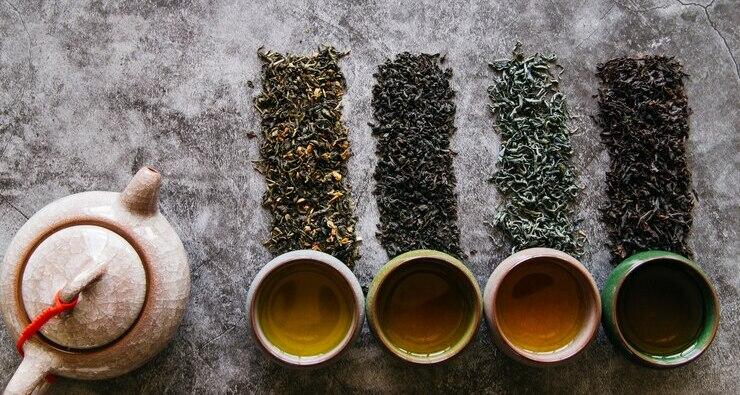










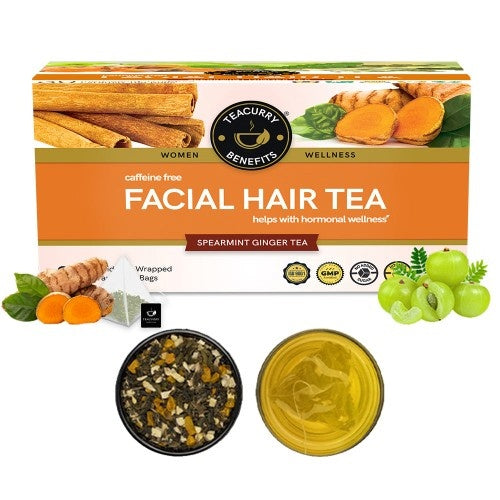

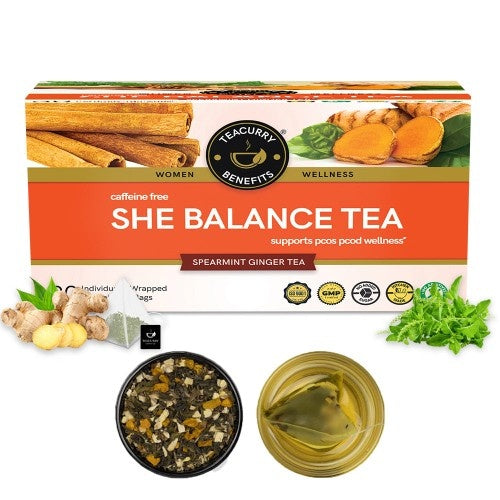
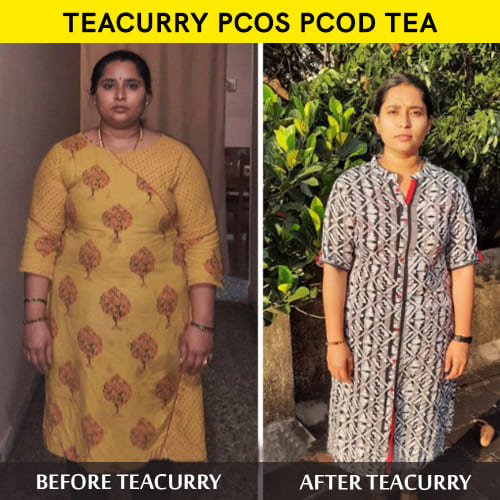
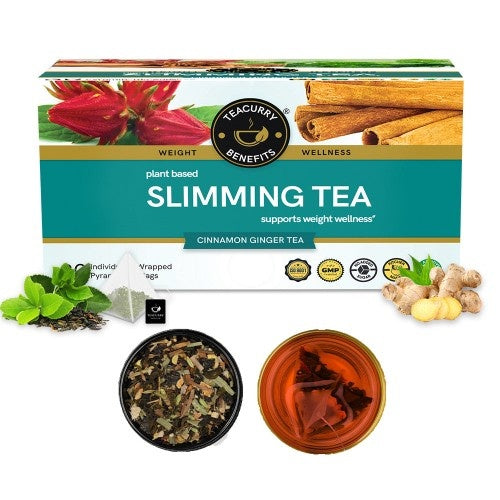













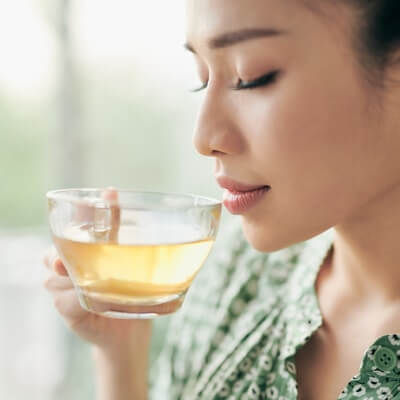






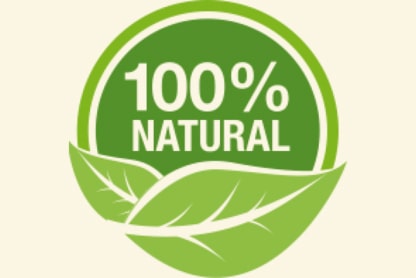



4 comments
Green tea comes in various types, such as Sencha, Matcha, and Gyokuro, each offering unique flavors and health benefits. These varieties differ in processing methods, from fresh grassy notes to sweet, umami-rich tastes. Green tea is popular for its refreshing taste and potential health advantages like improved brain function and fat burning.
Your writing is eloquent and well-crafted, which makes for a great read.
OMG! there are so many types of green tea..kabusecha green tea is very good..i tried it once and it has that wild flavour and mild sweetness
Amazing article. Didnt knew that there are so many types. Anyways, wanted to share this fact about teas – if you’re all about that green and on a weight-loss mission, you might want to choose Matcha green tea—the richest green tea source of nutrients and antioxidants. Drink green tea in the morning around 10:00 to 11:00 pm or early at night. You can drink a cup of green tea between meals, for example, two hours before or after to maximize the nutrient intake and iron absorption. If you are an anemia sufferer, avoid drinking green tea along with food